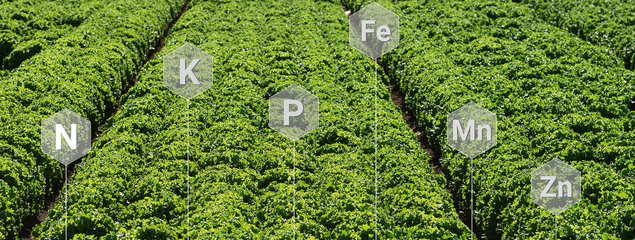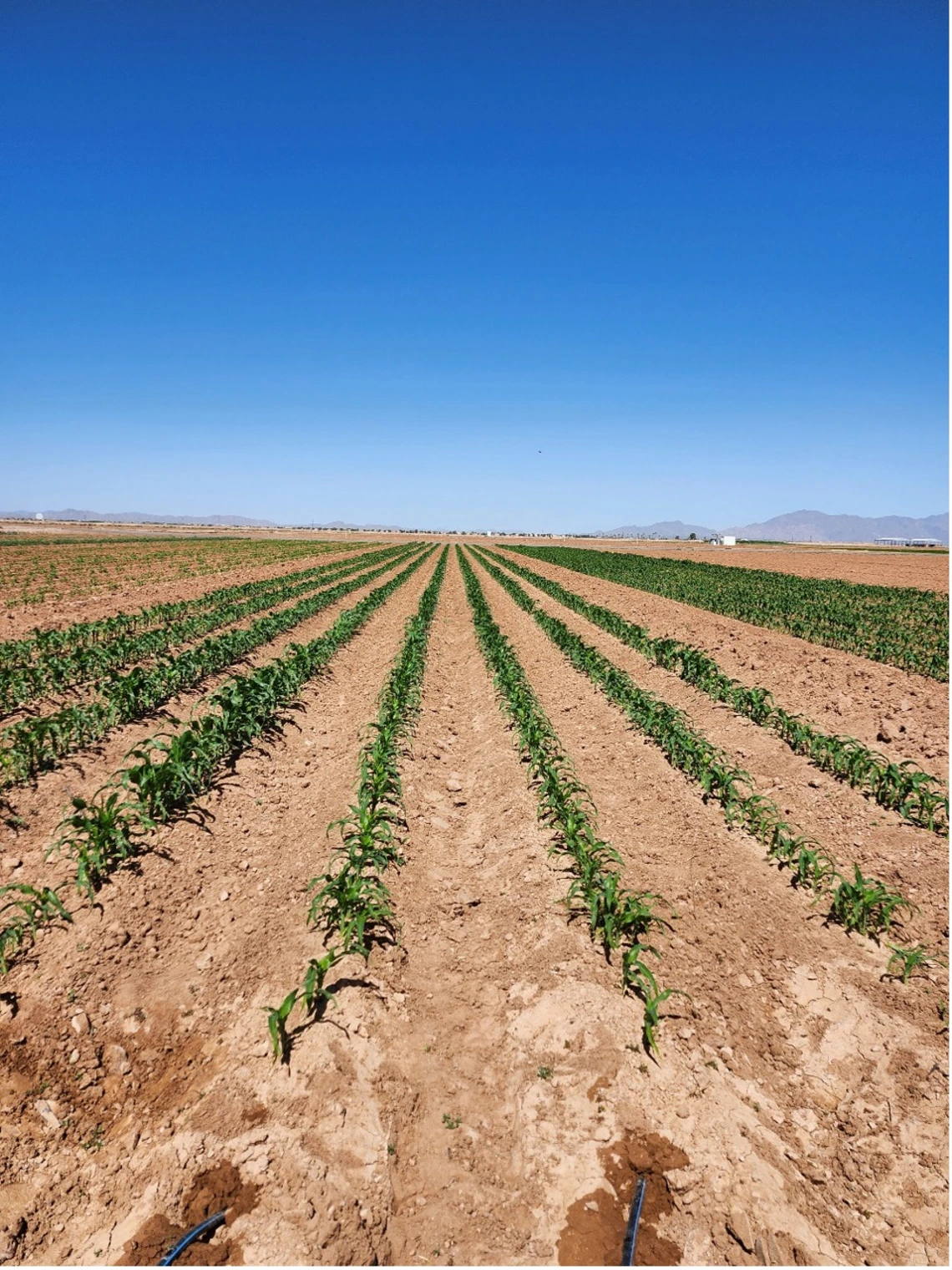
Improve Plant Nutrition
Fertilizer Guidelines for Vegetable Crops in Arizona
Crop Fertilizer Guidelines (3)
Sweet Corn (3.12)
There is no commercial shipping of sweet corn from Arizona. Most of the industry is for local sale, including farmer markets, roadside vendors, and you-pick operations (88). Complete statistics on these enterprises are not available, but the author of this webpage estimates total sweet corn acreage in Arizona is currently less than 1,000 acres.
Above-ground N accumulation by sweet corn is approximately 150-160 lbs N/acre, and nitrogen (N) removed in the harvested ears is about 60-80 lbs N/acre (7). In contrast to most other vegetable crops, sweet corn potentially takes up N from soil depths greater than one foot. The author has never failed to maximize yields at N rates less than 200 lbs N/acre, even where soil nitrate-N tests are less than 10 ppm.
Pre-plant N applications should be based on a pre-plant nitrate-N test, and recommended rates will vary from 10-40 lbs/acre depending on soil test level and rates of MAP applied as a pre-plant P fertilizer (Section 2.1). The N can be applied in a blend with the pre-plant P fertilizer.
As to the author’s knowledge, most sweet corn in Arizona remains furrow irrigated, and most in-season N application is by side dress application before the corn gets taller than 18 inches. The N rate to be applied at side dress should be based on a pre-side dress nitrate-N test. The required application rate depends on the difference between the soil test level and the minimum required threshold of 30 ppm. Approximately 4 lbs of N/acre need to be added to increase the soil test nitrate-N by 1 ppm. Fertigation in furrow water later in the season should only occur if soil nitrate-N levels fall below 20 ppm before silking. Interestingly, in contrast to other furrow irrigated vegetable crops addressed in these guidelines, the stem nitrate-N test seems to work well as a prognostic tool (Figure 3-12-1). Perhaps the plant provided a better indicator of N for corn than the one-foot soil sample we typically collect. However, the first side dress sometimes occurs before stalks are established. The guidelines for using the stem nitrate-N test as a guide for in-season fertilization can be found in Section 4.2. Sweet corn can be produced under drip irrigation or linear move or pivot systems. These systems allow for frequent split fertigation opportunities and N guidelines for these practices are addressed in Section 4.4.
Sweet corn is very sensitive to phosphorus (P) shortages, and deficiencies are reflected in reduced ear length and incomplete kernel filling as well as total yield. Nevertheless, sweet corn is efficient in taking up soil P, and we generally do not anticipate yield and quality responses above an Olsen soil test P level of 15 ppm (Table 3-12-2). Because spring sweet corn in Arizona is often planted into cold soils in late February or early March, it will respond to a starter P fertilizer at Olsen P levels greater than 15 ppm. Conversely, for fall sweet corn that is planted in late July or early August, we do not anticipate a response to starter P fertilizers when Olsen P levels exceed 15 ppm.
Sweet corn in Arizona has not shown a yield or quality response to potassium (K) fertilizers in Arizona. It is efficient at taking up soil K and one should only become concerned if AA soil test K values fall below 80 ppm (Section 2.3). Leaf tissue K concentration greater than 2.5% generally indicates K sufficiency (Section 4.3).
Based on recent observations that some vegetable crops have shown response to zinc (Zn) fertilization in Arizona, soil DTPA Zn levels should be monitored (Section 2.5). Excessively high P soil fertility can also induce Zn deficiency (89). Leaf tissue Zn levels below 35 ppm might be cause for concern (Section 4.3).

Figure 3-12-1
Sweet corn P fertilizer experiment at the Maricopa Agricultural Center in spring 2024.

Table 3-12-1
Evaluation of diagnostic accuracy of tissue and soil N testing for sweet corn across multiple sites in Arizona.
1Number of observations. There were less observations for stalk tests since the first side dress often occurred before there were stalks to sample.
2Critical level. California uses 20 ppm in their systems. However, in the early season side dress system we used, we found 30 ppm worked better. This is not surprising considering over 90% of the N uptake occurs after the first side dress. This N uptake is generally greater than 80 lbs N/acre and often no other in-season N application occurs.

Table 3-12-2
Sweet corn P fertilizer guidelines by pre-plant Olsen P soil test.
Rates can be reduced by 25% for strip or band applied P.

